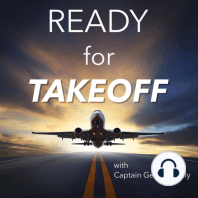25 min listen
RFT 096: Night Flying
FromReady For Takeoff - Turn Your Aviation Passion Into A Career
ratings:
Length:
7 minutes
Released:
Jun 23, 2017
Format:
Podcast episode
Description
Night flying is generally smoother and features less communications traffic congestion than daytime flying. But to have a safe night flight, the pilot needs to be extra vigilant in several areas. For starters, it is much more difficult to find a suitable area for an emergency landing at night, so you might want to adjust your route of flight to remain within a reasonable distance of suitable emergency airports. That might necessitate flying slightly higher at night to maximize gliding distance. Flying higher, however, has its own downside at night, since vision is directly affected by oxygen level. Consider using supplemental oxygen if flying above 5,000 feet. Prepare your eyes for night vision by wearing sunglasses for at least 30 minutes before dusk. Rhodopsin - visual purple - enhances the sensitivity of the rods in your eyes. Once your eyes are dark-adapted, they can discern the light of a candle at 2 miles. Even a brief flash of light will bleach out the rhodopsin and destroy the enhanced night vision. Rhodopsin is insensitive to red light. Have at least two flashlights available, and keep instrument lights as dim as possible. Currency requirements to carry passengers: 3 full stop landings within an hour of sunset or sunrise during the preceding 90 days.
Released:
Jun 23, 2017
Format:
Podcast episode
Titles in the series (100)
RFT 010: Pilot Phil Pagoria describes how he "paid his dues" to get a job with a major airline: Phil Pagoria went the civilian route to his goal of flying for a major airline. In the process, he "paid his dues" in challenging, low-paying jobs and worked his way up to flying "big iron". by Ready For Takeoff - Turn Your Aviation Passion Into A Career
